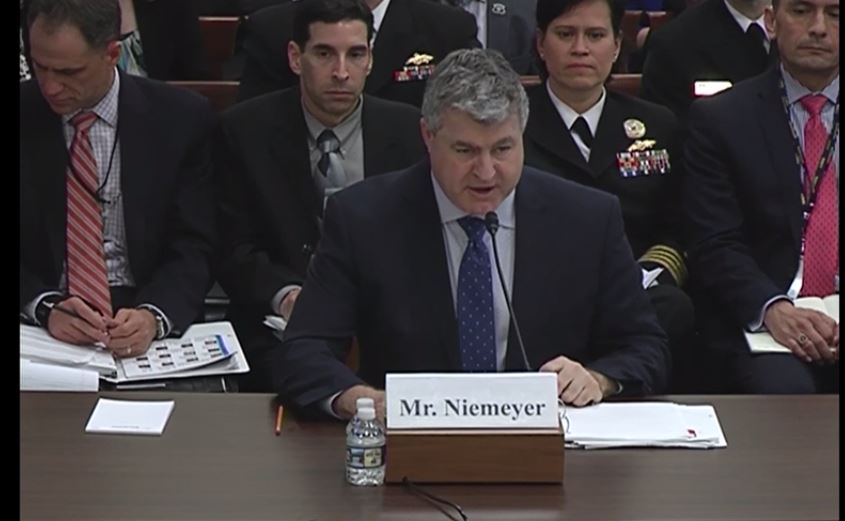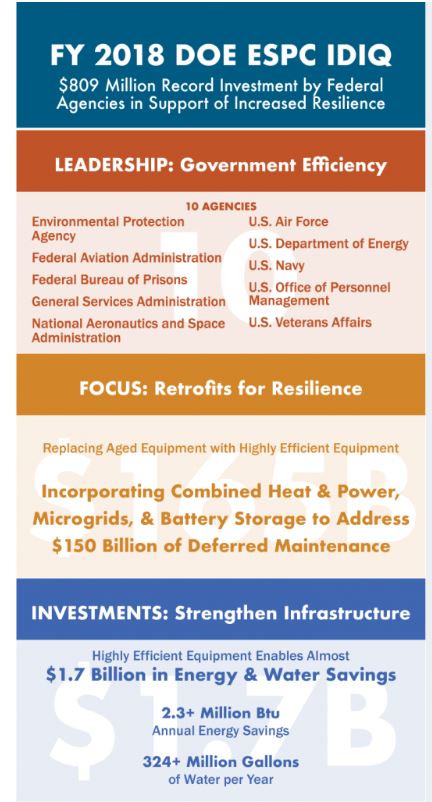

The Energy Department and the Department of the Navy worked together on the largest Energy Savings Performance Contract ever for the Naval Station Guantanmo Bay in...
Best listening experience is on Chrome, Firefox or Safari. Subscribe to Federal Drive’s daily audio interviews on Apple Podcasts or PodcastOne.
In fiscal 2019, the Energy Department signed 11 new deals to help agencies take advantage of private investments to reduce energy costs.
While it was 12 fewer than the year before, Energy inked the largest one in the history of the Energy Savings Performance Contract (ESPC) program with the Department of the Navy. The two collaborated on a deal worth $828 million for the Naval Station Guantanamo Bay in Cuba.
This latest deal is part of how the Navy is striving to be energy independent with expected savings of more than $834 million over 22 years.
Lucian Niemeyer, the acting Assistant Secretary of the Navy for Energy, Installations and Environment, said the goal of the contract is to provide the Navy with more resiliency when it comes to energy sources.

“This will truly get us to [our] National Security [goals], which is more efficiency for the future as well as being able to ensure we have reliable, resilient and effective power for us right now,” Niemeyer said in an interview with Federal News Network. “That is really the key for us is resilience. You’ve seen what has happened recently with some of our grid issues around the country. We are laser focused on ensuring resiliency to power our platforms and bases for the future.”
Niemeyer told the House Armed Services Committee in October that the DoN has implemented energy focused governance processes to mitigate its highest priority energy resilience gaps.
“By bringing multiple resiliency issues into an integrated Navy and Marine Corps planning and governance process, the department is able to pursue innovative solutions involving communities, industry, and other federal agencies,” he said during his testimony before the subcommittees on Intelligence and Emerging Threats and Capabilities and on Readiness. “The new power plant for our Navy base at Guantanamo Bay incorporates a multi-fuel power solution using liquefied natural gas as its primary fuel. This solution enables this remote outpost to operate for 30 days (dependent on loads) without refueling; and finally, if natural gas supplies were disrupted the system is capable of operating on diesel fuel. We are pursuing similar goals for other critical platform installations for both the Navy and Marine Corps.”
The Navy, like other military services, has made energy resiliency a major focus area, particularly around operational needs.

Niemeyer said as bases, installations, ships and weapons require more and more energy to meet their goals, the service must ensure the power doesn’t go down, and if it does go down, use innovations such as micro-grids, to direct limited back-up power to the most critical facilities.
Daniel Simmons, the assistant secretary for the Office of Energy Efficiency and Renewable Energy, said ensuring military bases and communities have reliable energy is an agencywide goal.
“This means thinking very critically and holistically about our entire energy system,” Simmons said in an interview. “The added benefit of thinking about the resiliency of making sure [we] have it for the defense critical infrastructure is that means the entire system as a whole is going to hopefully be more resilient. That is our goal — to make sure we have the power that we need when we need it and where we need it.”

Simmons said the Federal Energy Management Program (FEMP) aims to accomplish this goal through innovative contracting and programmatic practices like ESPCs.
“It is looking at micro-grids, using onsite generation whether that is from wind or solar as well as from fossil fuel with oil or natural gas, to make sure the facilities that need to have that electricity are going to have it when they do,” he said. “It is looking at renewables, fossil fuel assets and energy storage, really everything we can do to increase the resiliency of the federal infrastructure.”
Simmons said while the Navy and DoD are FEMP’s biggest customers, other agencies can take advantage too. He said there is a lot of tools and information that are available for other agencies to improve energy efficiency and resiliency.
“When people do not have power, whether it is on a military base or at your home, everyone suffers. It’s critical that we do a good job at the department,” he said. “As the grid changes over time, we are building more resiliency into the grid rather than less to lead to a more resilient, robust energy future.”
Niemeyer said it’s that goal that Simmons talked about that is driving the Navy as well.
“We are looking for what gives us the best advantage right now in either a tactical or operational environment, and we are looking at how does fuel play into that,” he said. “We realize we are in contested domains. What we see happening around the world with energy markets and energy grids, and how adversaries can easily manipulate those, we realize we have a huge challenge in front of us. We are working with the Department of Energy to ensure regardless of any actions that are taken by anybody, we have a resilient grid and we can still project military power and protect our national security interest. The more we do today, the more deterrence we can put in place making it less likely anyone will ever want to attack our grid because it’s resilient and we have a way of responding very quickly.”
Copyright © 2025 Federal News Network. All rights reserved. This website is not intended for users located within the European Economic Area.
Jason Miller is executive editor of Federal News Network and directs news coverage on the people, policy and programs of the federal government.
Follow @jmillerWFED
